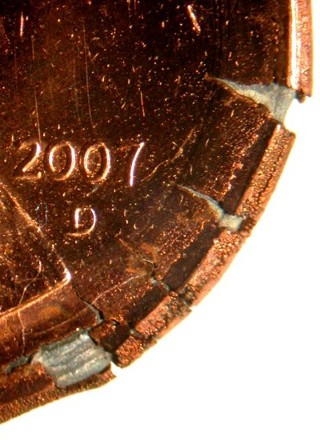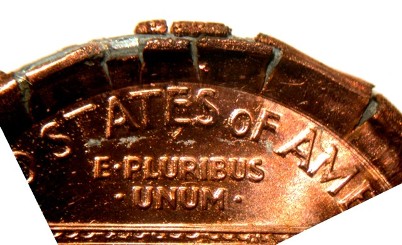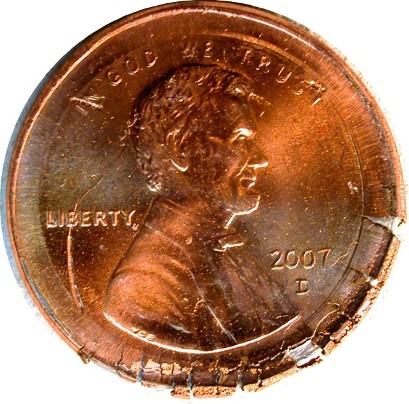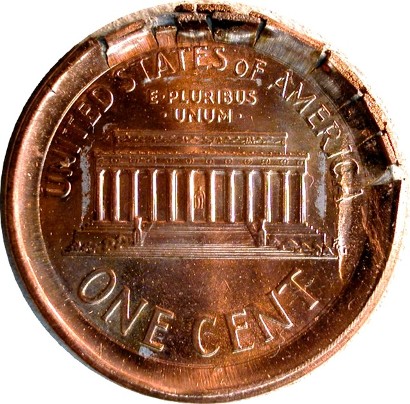Part V: Planchet Errors:
Plating Errors:
Thick plating
The existence of this 2007-D cent raises an immediate question. There are several heavy zinc cents known (both business strikes and proofs) with one weighing in at 3.5 grams. It has always been assumed that these were struck on rolled-thick planchets that were normally plated. Now we have a second possibility – that they were struck on normal zinc planchets that received an unusually heavy layer of copper. Unless such a coin is struck out of collar, it’s unlikely the heavy plating will be detected. Inside the collar, the heavy copper plating is not subjected to the same tensile forces as a broadstrike, so it’s conceivable that the plating would not crack.
2007-D Lincoln cent which fortunately suffered a close double strike in conjunction with a major broadstrike. This error weighs a hefty 2.98 grams, far exceeding the normal weight of a zinc cent of 2.5 grams. The thick plating shows reduced ductility and increased brittleness. It cracked and split open along the edge from the 3:00 to 8:30 clock position.



